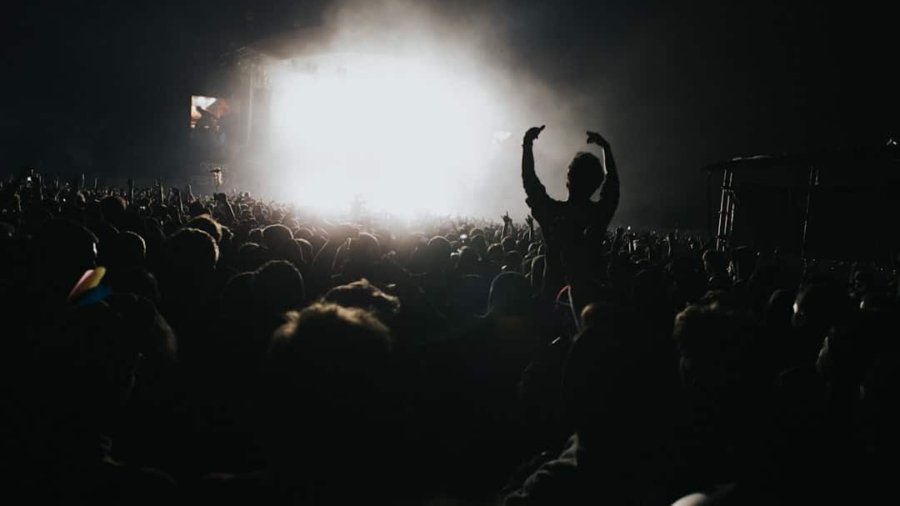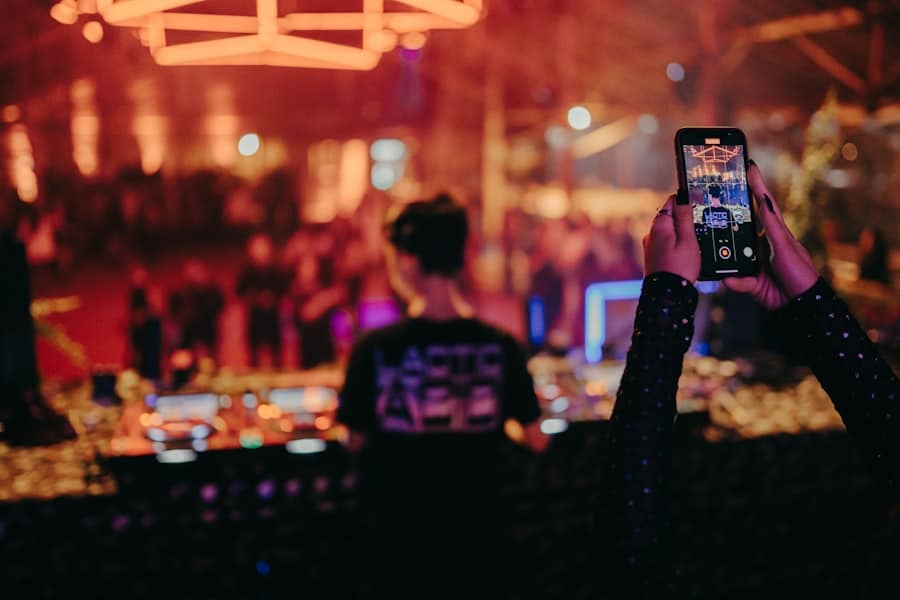Augmented Reality (AR) has emerged as a transformative technology, reshaping the landscape of live events and festivals. By overlaying digital information onto the physical world, AR enhances the audience’s experience, creating immersive environments that captivate and engage attendees in unprecedented ways. The integration of AR into live events is not merely a trend; it represents a significant evolution in how audiences interact with performances, exhibitions, and festivals.
As technology continues to advance, the potential for AR to redefine entertainment and engagement grows exponentially. The rise of AR can be attributed to several factors, including the proliferation of smartphones equipped with advanced cameras and sensors, as well as the development of sophisticated software platforms that facilitate AR experiences. This accessibility has allowed event organizers to experiment with AR applications, ranging from interactive displays to gamified experiences that encourage audience participation.
As a result, AR is becoming an essential tool for creating memorable moments that resonate with attendees long after the event concludes.
Key Takeaways
- AR enhances live events and festivals by overlaying digital content onto the real world, creating immersive experiences for attendees.
- Current use of AR in live events and festivals includes interactive maps, virtual tours, and augmented performances to engage and entertain audiences.
- Advancements in AR technology, such as improved tracking and rendering capabilities, are enhancing the quality and realism of AR experiences at live events and festivals.
- AR has a significant impact on audience engagement and experience, allowing for personalized interactions and unique storytelling opportunities.
- Challenges for implementing AR in live events and festivals include technical limitations, cost considerations, and the need for seamless integration with existing event infrastructure.
Current Use of AR in Live Events and Festivals
Currently, AR is being utilized in various ways across live events and festivals, enhancing both the visual spectacle and the interactive elements of these gatherings. For instance, music festivals have begun incorporating AR applications that allow attendees to use their smartphones to unlock exclusive content or view 3D animations that complement live performances. A notable example is the Coachella Valley Music and Arts Festival, which has embraced AR to create interactive art installations that attendees can explore through their devices.
These installations not only provide entertainment but also encourage social sharing, amplifying the festival’s reach beyond its physical boundaries. In addition to music festivals, sporting events have also adopted AR technology to enhance viewer engagement. The NBA has experimented with AR features that allow fans to visualize player statistics and game highlights in real-time through their mobile devices.
This integration of AR into live sports broadcasts provides fans with a richer understanding of the game while fostering a deeper connection to their favorite teams and players. Such applications demonstrate how AR can bridge the gap between physical attendance and digital interaction, creating a more holistic experience for fans.
Advancements in AR Technology for Live Events and Festivals
The advancements in AR technology are pivotal in shaping its application within live events and festivals. One significant development is the improvement of AR software platforms that enable seamless integration of digital content into real-world environments. Companies like Niantic, known for their work on Pokémon GO, have pioneered location-based AR experiences that can be adapted for various event settings.
This technology allows event organizers to create interactive treasure hunts or guided tours that lead attendees through different areas of a festival or venue, enhancing exploration and engagement. Moreover, hardware advancements have also played a crucial role in the evolution of AR experiences. The introduction of lightweight smart glasses and headsets has made it possible for users to experience AR without relying solely on smartphones.
Devices like Microsoft’s HoloLens and Magic Leap One offer immersive experiences that can transform how audiences interact with live performances. For example, during a theater production, actors could use AR to interact with virtual characters or environments, creating a dynamic storytelling experience that captivates audiences in new ways.
Impact of AR on Audience Engagement and Experience
The impact of AR on audience engagement is profound, as it fosters a more interactive and participatory atmosphere at live events. By allowing attendees to engage with digital content in real-time, AR encourages them to become active participants rather than passive observers. This shift in engagement dynamics can lead to heightened emotional connections with the event, as audiences feel more involved in the experience.
For instance, at the Lollapalooza music festival, attendees can use an AR app to create personalized avatars that interact with virtual elements throughout the festival grounds, enhancing their sense of presence and ownership over their experience. Furthermore, AR has the potential to create shared experiences among attendees, even in large crowds. By providing synchronized AR content that all attendees can access simultaneously, event organizers can foster a sense of community and collective enjoyment.
For example, during a concert, an artist might use AR to project visuals that all attendees can see through their devices, creating a unified experience that transcends individual perspectives. This communal aspect of AR not only enhances enjoyment but also encourages social interaction among attendees, as they share their experiences on social media platforms.
Challenges and Considerations for Implementing AR in Live Events and Festivals
Despite its potential benefits, implementing AR in live events and festivals comes with its own set of challenges and considerations. One significant hurdle is ensuring reliable connectivity for attendees. Many live events take place in areas where cellular service may be limited or inconsistent, which can hinder the effectiveness of AR applications that rely on real-time data streaming.
Event organizers must consider infrastructure improvements or partnerships with telecommunications companies to provide robust connectivity solutions that support seamless AR experiences. Another challenge lies in the accessibility of AR technology for all attendees. While smartphones are ubiquitous, not everyone may have access to the latest devices capable of supporting advanced AR applications.
Event organizers must strive to create inclusive experiences that cater to diverse audiences, potentially offering alternative ways to engage with AR content for those without compatible devices. This could involve providing rental devices or creating physical installations that do not require personal technology for interaction.
Potential Future Applications of AR in Live Events and Festivals
Looking ahead, the potential applications of AR in live events and festivals are vast and varied. One exciting possibility is the use of AR for personalized experiences tailored to individual preferences. Imagine attending a festival where your smartphone app curates a unique schedule based on your musical tastes or interests, guiding you to specific performances or installations that align with your preferences.
This level of personalization could enhance attendee satisfaction and encourage exploration beyond familiar artists or genres.
By integrating AR navigation features into event apps, attendees could receive real-time directions to stages, food vendors, or emergency services through their devices.
This application would not only improve the overall experience but also contribute to crowd management efforts by reducing congestion at popular areas. As technology continues to evolve, the possibilities for innovative applications of AR in live events will expand further.
Integration of AR with Other Technologies in Live Events and Festivals
The integration of AR with other emerging technologies presents exciting opportunities for enhancing live events and festivals. For instance, combining AR with Virtual Reality (VR) could create hybrid experiences where attendees can choose between immersive VR environments or augmented enhancements within their physical surroundings. This convergence could allow for unique storytelling opportunities where audiences can switch between different modes of engagement based on their preferences.
Moreover, integrating Artificial Intelligence (AI) with AR could lead to more intelligent and responsive experiences at live events. AI algorithms could analyze attendee behavior and preferences in real-time, adjusting the AR content displayed based on crowd dynamics or individual interactions. For example, if a particular installation garners significant attention from attendees, AI could trigger additional content or features related to that installation, enhancing engagement further.
The Evolution of AR in Live Events and Festivals
The evolution of Augmented Reality in live events and festivals marks a significant shift in how audiences experience entertainment. As technology continues to advance, the integration of AR will likely become more sophisticated and widespread, offering new avenues for engagement and interaction. From enhancing visual spectacles to fostering community connections among attendees, the potential for AR is vast.
As event organizers navigate the challenges associated with implementing this technology, they will also uncover innovative solutions that enhance accessibility and connectivity for all participants. The future promises an exciting landscape where live events are not just attended but experienced in deeply personal and interactive ways through the lens of augmented reality.
In a recent article discussing The Future of AR in Live Events and Festivals, it is interesting to note how technology is revolutionizing the way we experience events. For those interested in exploring the world of software, a related article on the best free software for home remodeling provides valuable insights into how technology can enhance our everyday lives. Just as AR is changing the landscape of live events, software is transforming the way we approach home improvement projects.
FAQs
What is AR?
AR stands for Augmented Reality, which is a technology that superimposes digital information such as images, videos, or 3D models onto the real world, typically viewed through a smartphone or AR glasses.
How is AR used in live events and festivals?
AR is used in live events and festivals to enhance the attendee experience by providing interactive and immersive elements such as virtual tours, interactive maps, digital art installations, and AR-powered games.
What are the benefits of using AR in live events and festivals?
The benefits of using AR in live events and festivals include increased attendee engagement, enhanced brand experiences, improved wayfinding and navigation, and the ability to deliver personalized and interactive content.
What are some examples of AR experiences at live events and festivals?
Examples of AR experiences at live events and festivals include AR-powered scavenger hunts, interactive AR art installations, virtual try-on experiences for merchandise, and AR-enhanced stage performances.
What is the future of AR in live events and festivals?
The future of AR in live events and festivals is expected to include more advanced and seamless AR experiences, integration with wearable AR devices, personalized and location-based AR content, and the use of AR for ticketing and access control.



